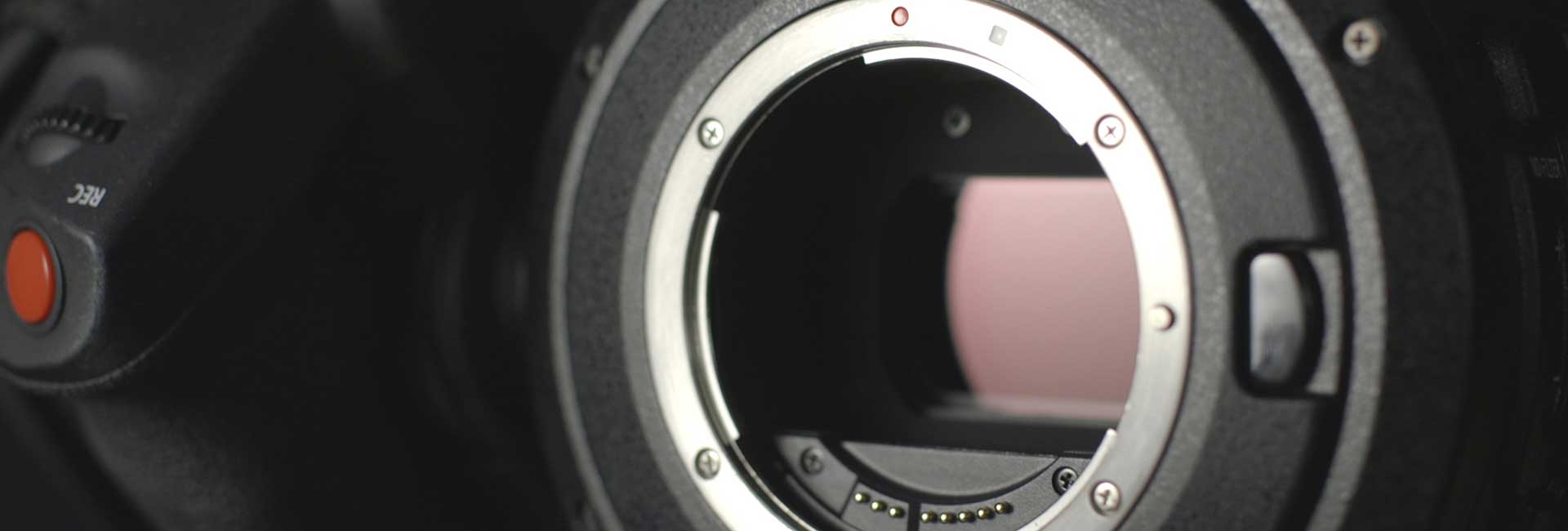
Have you experienced this as well? Suddenly black spots appear on your impressive holiday photos? If so, the sensor of your camera is probably covered with dust or other particles in the air. At this point at the latest, it's time for a professional sensor cleaning.
Each time you change the lens on your camera, there is a risk of dust or other particles entering the camera body. These particles may then settle on the image sensor. For example, if you change the lens on your next beach trip in order to take a unique panoramic shot of the entire beach, there is always the risk that a lot of tiny dust particles might get into the inside of your camera.
You think this will never happen to you? Far wrong. Even if you change the lens at the table in your own home, countless tiny particles still manage to get into your camera. How does this happen? The air is full of tiny dust particles that cannot be seen with the naked eye. In the camera body, these then merge to form larger particles. But changing lenses is not the only source of danger. Dust can also settle on the lenses themselves or on the caps of the bodies. Over time, this dust will trickle down and get into the camera's interior, as very few cameras are dust-proof.
However, even if you do not open your camera, tiny particles can be released and may stick to the sensor. This may be caused, for example, by the mechanical abrasion of moving components. Even with zoom lenses, depending on the design, air including dust and tiny particles, can get into the inside of your camera.
Therefore, there are numerous ways in which the sensor of your camera may get soiled. However, even if the camera has an integrated automatic sensor cleaning function, it is impossible to prevent the sensor from becoming soiled in the long run. The result: black spots on your pictures that will require costly and time-consuming retouching.
Dust is one of the greatest foes of any photographer. This was true even in the days of analogue photography. And it still holds true today. During use, the camera sensor is statically charged and literally attracts dust. No matter whether you own a cheap entry-level camera or an expensive top-of-the-range model - you will in any case need to consider the issue of sensor cleaning. However, by following a few simple tips, you can significantly reduce the risk of soiling your sensor.
Since soiling the sensor is unavoidable, the question of how to clean a soiled sensor arises. If you ask in different forums, you will receive numerous, sometimes rather foolish, suggestions. (Please do not try to use the tip of applying adhesive tape to the sensor!)
The easiest method that probably comes to mind is blowing on the sensor. However, we strongly advise against doing this as well. When blowing, tiny droplets of saliva always end up on the sensor. These will dry there and have to be removed with a complicated damp cleaning process.
Furthermore, do not use compressed air sprays or air compressors. The pressure will be far too high and the sensor is at risk of being damaged.
Please do not use brushes either. These are only intended for the cleaning of lenses. If you use a brush on the sensor, there is a risk that the hard grains will scratch the sensor. Our recommendation as a first aid measure (e.g. when you are on a holiday) is to use air bellows, an item that you can also purchase in our online shop or in our shops, of course. However, blowing only swirls up the dust, so that a large part of the particles are still inside the camera. So this method of cleaning is only a temporary solution.
The safest solution is always professional sensor cleaning by an expert. Here, the dust is removed contactlessly with a special suction device. 80% of all impurities are easily removed this way. All remaining particles are then removed through a special damp cleaning.
You wish to always achieve the best results? Then don't wait until the camera sensor is soiled. Our recommendation: Have your camera sensor professionally cleaned regularly, at least once a year. We offer sensor cleaning in all our retail shops. Here, your camera will be cleaned by our professionally trained staff. And best of all: you can usually pick up your camera on the same day, or at the latest on the following business day.
There is no shop close to your location? No problem. We also offer our professional cleaning service for customers of our online shop. Just send us an e-mail. Our specialist department will then get in touch with you as soon as possible.
Simply subscribe and benefit as a newsletter recipient every week: